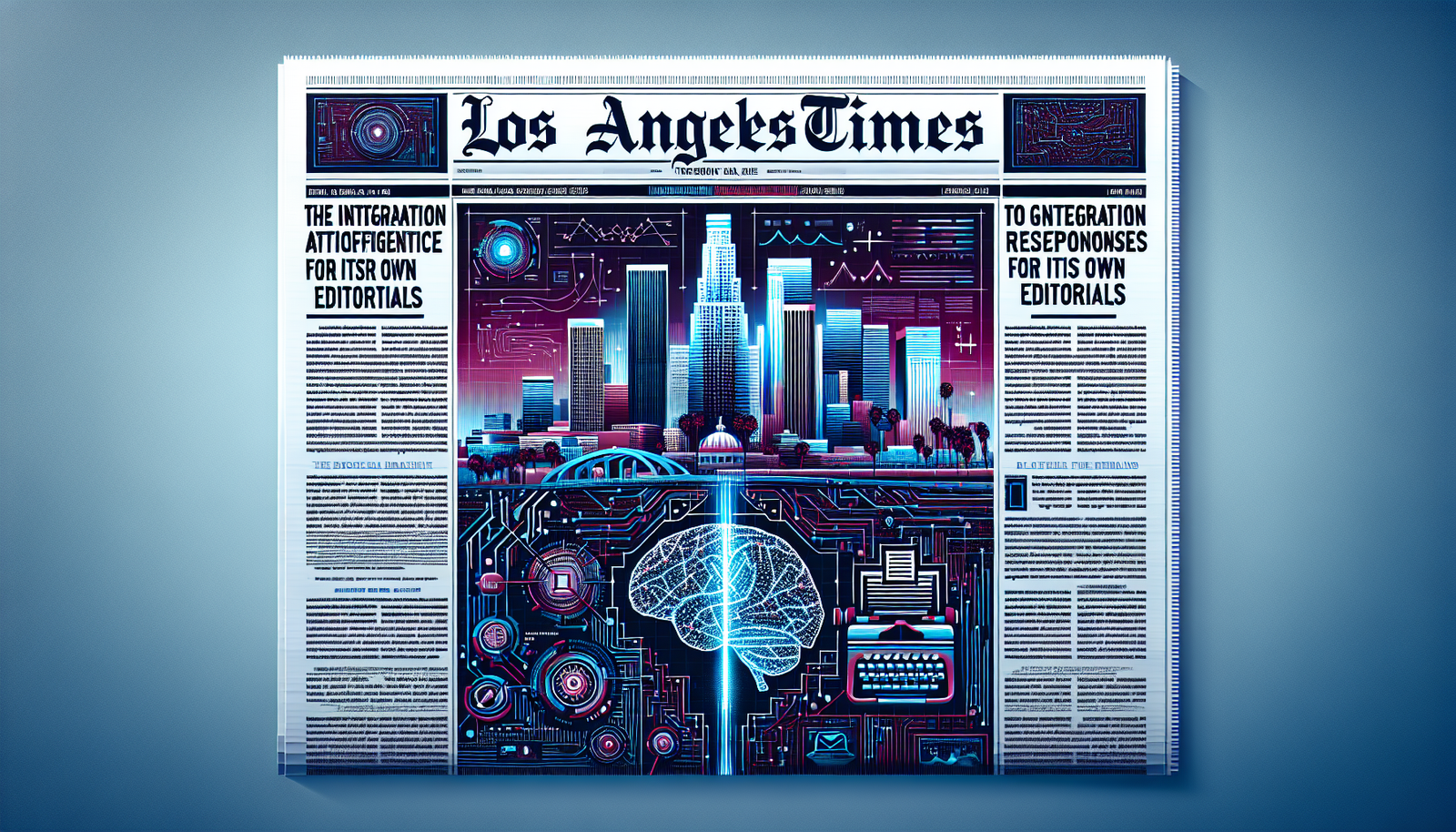The Los Angeles Times, emblematic of California media, ventures into a new era with the integration of artificial intelligence. This revolutionary decision raises questions about the bias of information and editorial autonomy. Using advanced technology, the newspaper aims to generate nuanced responses to its own editorials, thereby opening a debate on the reliability of journalistic content.
The adoption of this intelligent system offers a response to contemporary challenges of biased opinions, reinforcing reader engagement and inviting reflection.
Integration of Artificial Intelligence
The Los Angeles Times recently announced a bold initiative: the integration of artificial intelligence to generate counterarguments to opinion articles published in its columns. This decision is part of a clear intention to enhance the transparency and objectivity of its content.
Goal of the “Bias Meter”
Patrick Soon-Shiong, owner of the daily, has instituted the “bias meter,” a barometer of bias. This tool aims to measure the neutrality of articles and signal any form of bias that journalists may exhibit. By adopting this technology, the daily hopes to provide readers with a more balanced view of current issues.
Use of Counterarguments by AI
Starting in January, the Los Angeles Times will accompany its articles with a system powered by AI, capable of producing responses or alternative viewpoints. This device aims to encourage readers to consider different perspectives on debated topics, thereby enriching their understanding of the issues addressed.
Reactions from Experts and Scientists
This technological shift has elicited varied reactions among experts. Some applaud this initiative, viewing it as a means to address the growing problems of misinformation. Others, however, remain skeptical about the limitations of artificial intelligence in analyzing human opinions. They highlight the potential risk of reinforcing stereotypes due to biases inherent in AI systems.
The Stakes and Implications of this Innovation
The implications of this initiative extend beyond the writing of articles. It raises fundamental questions about the future of journalism in the digital age. The ability of AI to analyze texts and generate responses raises concerns about journalistic ethics and the independence of writers. With the rapid development of artificial intelligence, the media landscape is undergoing a major transformation.
Towards an Evolution of the Sector
Faced with the rapid evolution of technologies and the emergence of artificial intelligence tools, it is becoming essential for media to adapt. The Los Angeles Times provides an example of proactivity, seeking not only to integrate AI but also to use it as a lever to purify information. The determination of this daily newspaper to innovate could awaken a new momentum in the use of technology for the sake of information.
Global Context and Challenges Ahead
This initiative comes at a time when many media outlets face economic and ethical challenges. Concerns about misinformation and the manipulative use of technologies are growing in the current global context. The media, by using modern tools, seek to regain public trust, often shaken by scandals related to the integrity of information.
Now, with the Los Angeles Times at the forefront of this transformation, a new balance may emerge between journalistic tradition and technological innovation.
Frequently Asked Questions
What is the artificial intelligence initiative of the Los Angeles Times?
The Los Angeles Times has implemented an artificial intelligence system to generate counterarguments to opinion articles, aiming to enrich the debate and offer different perspectives on the topics addressed.
How does the bias meter of the Los Angeles Times work?
This meter, powered by artificial intelligence, evaluates articles and signals opinion biases, informing readers when partiality is detected in the texts.
Why does the Los Angeles Times use artificial intelligence for its editorials?
The main goal is to improve transparency and journalistic accountability, while offering a diversity of perspectives on the topics covered, to support quality journalism.
What are the benefits of using AI to generate responses to editorials?
Benefits include better objectivity, promoting debate, and the ability to quickly respond to current topics, while allowing readers access to a variety of opinions.
Are there concerns about the use of artificial intelligence in journalism?
Some concerns focus on the reliability of generated information, possible biases in algorithms, and the impact on human journalists; however, the Los Angeles Times is committed to maintaining a balance between human and technology.
What happens if the AI generates inaccurate or biased responses?
The Los Angeles Times has implemented control measures to minimize errors and biases, using feedback from journalists and readers to continually refine its algorithms.
Does the integration of AI change the role of journalists at the Los Angeles Times?
Yes, this could transform their role, with journalists now needing to collaborate with AI to enrich their articles and ensure that various perspectives are considered.
How can readers interact with this new feature?
Readers will be able to see the results of AI directly in the comments and analyses of articles, and they will have the opportunity to submit their impressions on the effectiveness of these responses.
Is this AI initiative unique to the Los Angeles Times?
Although other media are experimenting with AI in various aspects, the approach of the Los Angeles Times to use AI specifically to generate counterarguments to editorials is relatively unique and pioneering in the industry.






